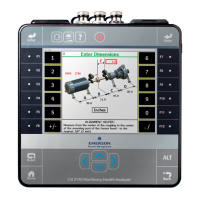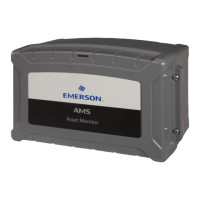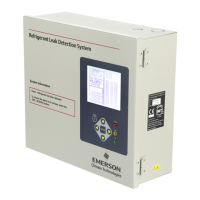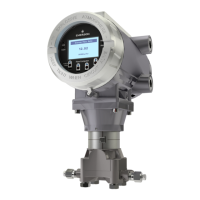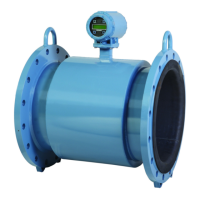Option Description
F3 Select Weight
Plane
Select the weight plane to use. You may want to select the plane
nearest the measurement plane that has the readings you want to use.
The default is weight plane 1.
F4 Enter Rotor
Weight
Enter the weight of the rotor between 0.00 and 100,000 lbs or 0.00
and 45,454.54 kg. The default is 1.
F5 Enter Tr Wght
Radius
Enter the radius where you place the trial weights on the rotor.
Enter a value between 0.00 and 650.00 inches or 0.00 and 1651 cm.
The default is 1.00.
F6 Enter Sensor Lag Enter the sensor/phase lag in degrees introduced by the sensor. The
default is 0.
F9 Select MPT in
Plane
Specify the measurement points to use. You can average all readings in
a specific measurement plane.
F10 Select Speed Enter the measurement speed to use, if you defined more than one.
The default is speed 1.
F11 Select Trial Run Enter the trial run. The first trial run is the default.
Note
A trial run must be specified where a weight was added to the specified
weight plane.
F12 Trial Weight
Units
Enter the units of the trial weight. If the weight units are unitless, the
default is ounces (oz).
3. Press F1 Calculate Solution.
The Amplification Factor Solution screen displays the amplification and system lag.
The Enter key is inactive on this screen.
4.
Press F7 Amp. Factor Calc. to exit and return to the calculation screen.
10.15.9 Convert magnitude or frequency values to a different
measurement unit
The Units Conversion option lets you enter magnitude, engineering units, units type,
frequency, and frequency units and the Balance program calculates the units in
acceleration, velocity, and displacement units.
Enter information on the left side of the screen. The calculated solutions are on the right
side of the screen.
Note
This is available only in Advanced Balance mode.
Balance
354 MHM-97432 Rev 7
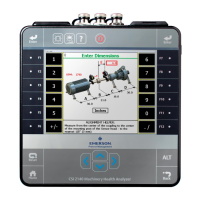
